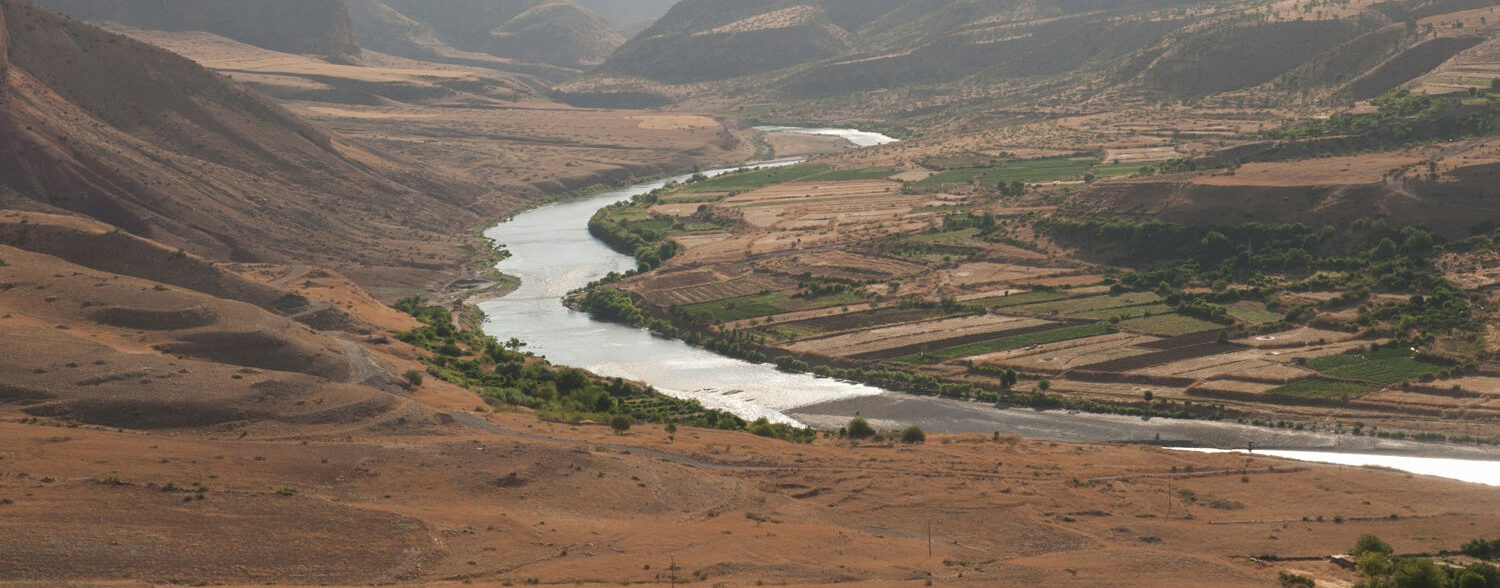“We are the people of Mesopotamia, one of the most remarkable areas of the world, known as the cradle of civilization. We are the people of Hasankeyf in Turkey and of the Marshes in Iraq. We are connected and combined by the Tigris River. The Tigris is our common root, our common lifeline and our common future.”
These are the opening lines of the declaration signed in 2012 by Iraqi sheiks gathered in the ancient town of Hasankeyf, a 12,000-year-old historical settlement in south-eastern Turkey at risk of being flooded upon completion of the Ilisu Dam – one of the many branches of the Turkish GAP hydropower project. The statement went beyond solidarity: community leaders from the Arab marshlands downstream and Kurdish activists upstream stressed a common heritage in need of protection. In an ethnically composite and politically fragmented region, terminology is never neutral. The use of the toponym “Mesopotamia”, literally the land between the two rivers of the Fertile Crescent, underscored belonging to a historically distinctive area along the banks of the Tigris and Euphrates and a collective memory encompassing multiple cultures, thus diluting ethno-national separations and unifying socio-environmental struggles against manmade threats to shared waterways.
Rather than being a one-off initiative, that early declaration gradually inspired the blooming of a counter-narrative to nationalist policies. In April 2019 civil society organizations of the four riparian countries (Turkey, Syria, Iraq, Iran) met in Iraq, in the Kurdish city of Sulaymaniyah, to hold the first Mesopotamian Water Forum under the umbrella of the Save the Tigris Campaign and the slogan “water knows no border”. In line with environmental campaigns worldwide advocating for the principle of free-flowing rivers, the activists assembled at the University of Sulaymaniyah rejected the use of water as political tool and took a stance for the equitable sharing of waterways. Rather than climate change, emphasis was put on the damage inflicted through negligence or self-interest by riparian governments, thus underlining their non-compliance with international law, and in particular with the 1997 UN Convention on the Law of the Non-Navigational Uses of International Watercourses, in order to make countries accountable for misuse of the riverine ecosystem.
By shifting attention from water shares to water rights, the Forum was relevant in a twofold sense: first, disengage water issues from the zero-sum game of geopolitical struggles regional countries are mired in; second, posit a bottom-up model of environmental governance that is attentive to the direct involvement of local communities. Beyond that, however, the innovative message of the mobilization lies in the re-articulation at the ideological level of Mesopotamia as discursive marker. “Mesopotamia” is devoid of sectarian and factional connotations since it recalls the glorious past of pre-Islamic empires and civilizations that are lost in history. It pre-dates the modern-day state system. “Mesopotamia is not sensitive to anyone”, explained an organizer of the forum, “It’s not Arab, or Persian, or Syrian. Everybody wants to be part of it”.
Not by chance, the re-imagination of Mesopotamia owes much to the transnational Kurdish liberation movement. Known as the largest stateless nation in the world, Kurds have drawn on it to legitimate claims for autonomy in their host states and wish for the overall political reconfiguration of the Middle East. Starting with the prison writings of the Kurdistan Workers’ Party (PKK) leader Abdullah Öcalan, in recent years a wide repertoire of actions and frameworks was developed. Most notably, the Mesopotamian Ecology Movement was formed during the 2011 Social Forum in Diyarbakır, the major Kurdish city in Turkey. The revolution unfolding in Rojava, the Syrian side of Kurdistan, is also guided by the principles of ecology and political pluralism.
Back to water politics, the reference to Mesopotamia as common space brings to the fore an inclusive understanding of security that goes beyond the state-centric territorialization of international rivers, which misconceives water resources as a feature of sovereignty. Historically, the emergence of nation-states and central administrations led to the partition of water bodies into national segments. In so doing, waterscapes are constructed as integral parts of the homeland: not only a strategic resource, kept inside sovereign borders, but also a figurative element belonging to the national community. Through this process of material and symbolic territorialization, which breaks the hydrological continuity of transboundary basins, water becomes a hardly negotiable resource. Water is seen as something to “be appropriated, annexed, secured” by state actors that compete for dwindling resources. In a region endowed with less than 1.5% of the world’s renewable freshwater supply, scarcity comes to be a byword for conflict.
Despite impetus in UN policy circles on integrated planning and management across different jurisdictions, nationalism runs deep into predominant formulations of water governance. It is therefore not surprising that diplomacy has fallen short of securing peaceful solutions to looming water deficits and the potential conflicts that may arise. Tellingly, the Tigris-Euphrates basin is not governed by any multilateral agreement between riparian countries, thus leaving water issues at the mercy of unilateral actions. Relentless damming in Turkey and Iran at the expense of Iraq is a case in point.
Against this background, the path-breaking call for a Mesopotamian identity goes towards de-escalation of disputes and promotion of a rights-based decentred approach to water governance. The myth sustains an environmental vision surmounting the arbitrary lines of ethnicity, class, religion, and political affiliation. This holistic view also stresses a key balance between environment and society: biodiversity and sustainability are thought to be inseparable from multi-ethnic and multi-cultural richness. This connects in principle all cases of environmental injustice across the basin, from the flooding of Hasankeyf in Turkey to the depletion of the spring of Khani Bil in Iran. In other words, historical and ecological connectedness is central to the framing of a common identity, upon which inclusive and participatory arrangements within the transboundary water system may blossom. In light of recent protests sparked in Iraq and elsewhere in the broader region, hopes for democratization also run through its historical rivers and the ways these are governed.

